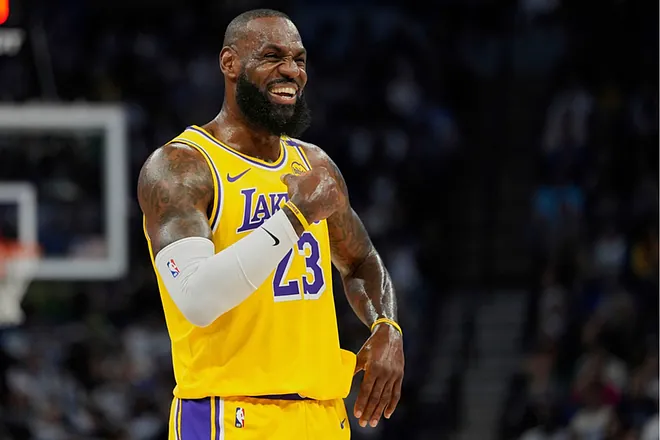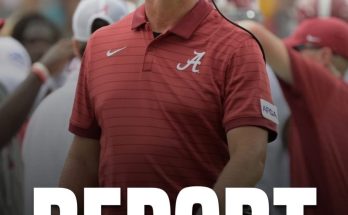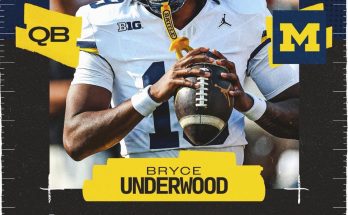LeBron James is not just a basketball player. He’s an icon, a global ambassador of the game, and a master of innovation whose career has spanned more than two decades at the highest level. As the NBA’s all-time leading scorer and a four-time champion, James has always been known for his incredible physical gifts, basketball IQ, and unmatched longevity. But in a recent interview that’s turning heads across the sports world, LeBron pulled back the curtain on something often overlooked in discussions about greatness: the role of imagination and creativity in his development — and how it flourished not in elite training facilities or under the constant watch of a personal trainer, but in solitude, self-discipline, and freeform exploration.
LeBron’s revelation came during an in-depth conversation about his early years, when he developed his game on the courts of Akron, Ohio, often without access to a trainer or specialized coaching. “I didn’t have a trainer growing up,” James said. “There wasn’t a person putting me through cones or drills. I just went outside and hooped. I figured it out. I created moves. I reacted. I experimented.” That experimentation — unstructured, spontaneous, and instinctual — played a central role in shaping one of the most versatile players the game has ever seen.
At a time when young athletes are increasingly pushed toward structured development with year-round trainers, skill-specific coaches, and data-driven feedback, James’ comments are a striking reminder of the value of creativity and improvisation. In his youth, LeBron didn’t rely on meticulously crafted regimens. He relied on his own curiosity and competitive drive. “The court was my canvas,” he said. “And I painted whatever I wanted on it.”
There’s a romanticism in that image — a young LeBron dribbling alone in the fading daylight, trying out a spin move or fadeaway shot not because someone told him to, but because he was chasing a feeling, testing a theory, or imitating a move he’d seen on TV. That environment — unpressured, self-directed, and unrestricted — helped foster the kind of basketball instincts that can’t be taught in drills.
In many ways, LeBron’s upbringing represents a fading era in basketball development. In today’s world, elite prospects are often groomed from a young age with private trainers, skill coaches, nutritionists, and detailed workout plans. The AAU circuit dominates the youth basketball landscape, with kids playing dozens of organized games each year, traveling coast to coast. That level of access and support has certainly produced refined talent, but LeBron questions whether it’s producing original thinkers on the court.
“You gotta let the game teach you sometimes,” James said. “The creativity, the decision-making, the feel — that comes from messing up, trying stuff, and learning in real-time. When everything’s pre-packaged or over-coached, it’s hard to find your own rhythm, your own voice in the game.”
That “voice” — a term he uses deliberately — is what sets players apart. It’s not just about skill execution, but about expression. LeBron isn’t the fastest player anymore, nor the highest jumper. Yet, at age 40, he still commands games because of how he sees the floor, manipulates defenders, and adapts to situations on the fly. That level of mastery, he argues, was cultivated through years of freeform play, not prescriptive routines.
“It’s like jazz,” he said. “You learn the rules, but you gotta be able to improvise. You need to be able to go off-script.”
LeBron also emphasized that his approach was shaped by necessity. Without money for personal trainers or access to high-level coaching, he had to rely on pickup games, imagination, and repetition. In the process, he learned to teach himself. That self-coaching, he believes, built the foundation of his basketball mind. “Nobody was watching me at 6 a.m. at the park,” he recalled. “It was just me, my ball, and a goal. So I learned to hold myself accountable. I learned how to assess my own game. That made me smarter.”
The conversation also touched on how this self-reliance continues to serve him today. Even as one of the most scrutinized and supported athletes in the world, LeBron still leans heavily on his own instincts when it comes to training, rest, and performance. “I have a great team around me now — don’t get me wrong,” he said. “But I’m still the one who knows my body and my game better than anyone. That mindset started back then.”
James noted that today’s young players often ask him about trainers and programs, wondering what formula will unlock greatness. His advice: start by discovering your own game. “There’s no shortcut,” he said. “Get in the gym. Play. Try new things. Watch film. Be your own coach sometimes. That’s how you develop basketball instincts. That’s how you build a bag.”
That “bag” — a player’s toolbox of moves, counters, and reads — is something LeBron developed not through drills but through trial and error. “A lot of my moves came from just watching guys and remixing their stuff,” he said. “I’d watch Jordan, Magic, Penny, AI, Kobe — and then I’d go outside and try to blend it together in my own way.”
He remembers studying how Michael Jordan created separation, how Magic Johnson manipulated defenses with his eyes, how Kobe Bryant perfected footwork, and how Allen Iverson’s crossover bent the laws of physics. But the key, LeBron says, wasn’t just copying — it was adapting. “You gotta take it, twist it, and make it yours,” he said. “That’s creativity.”
Even as he prepares for yet another NBA season, LeBron continues to innovate. His off-court creativity in media, fashion, and business is well-documented, but it all stems from the same principle he learned as a kid: trust your vision. Whether he’s launching a no-look pass, stepping into a logo three, or guiding his team with surgical precision, that creativity remains his calling card.
When asked how he would advise a young LeBron James today — someone growing up without a trainer in a world full of trainers — he smiled. “I’d tell him to keep doing what he’s doing,” he said. “The streets teach you. The game teaches you. Don’t be afraid to be different. Don’t be afraid to mess up. That’s how you grow.”
In many ways, LeBron’s story is not just about basketball, but about the broader value of unstructured time — of letting young people explore, make mistakes, and find their voice. In an era that prizes optimization and early specialization, his words are a powerful reminder that greatness doesn’t always need a blueprint. Sometimes, it just needs a ball, a court, and a willingness to create.
Reflecting on his legacy, James isn’t focused solely on the records or rings. He wants to be remembered for how he played the game — with joy, with freedom, and with creativity. “I always wanted to be more than a scorer, more than a passer,” he said. “I wanted to be an artist out there. I wanted to make the game beautiful.”
And he did. From Akron to Los Angeles, from high school phenom to NBA elder statesman, LeBron James has stayed true to that vision. No trainer taught him how to be LeBron James. He became LeBron James by trusting his instincts, embracing the unknown, and unlocking the creativity that lives inside anyone brave enough to listen to it.



